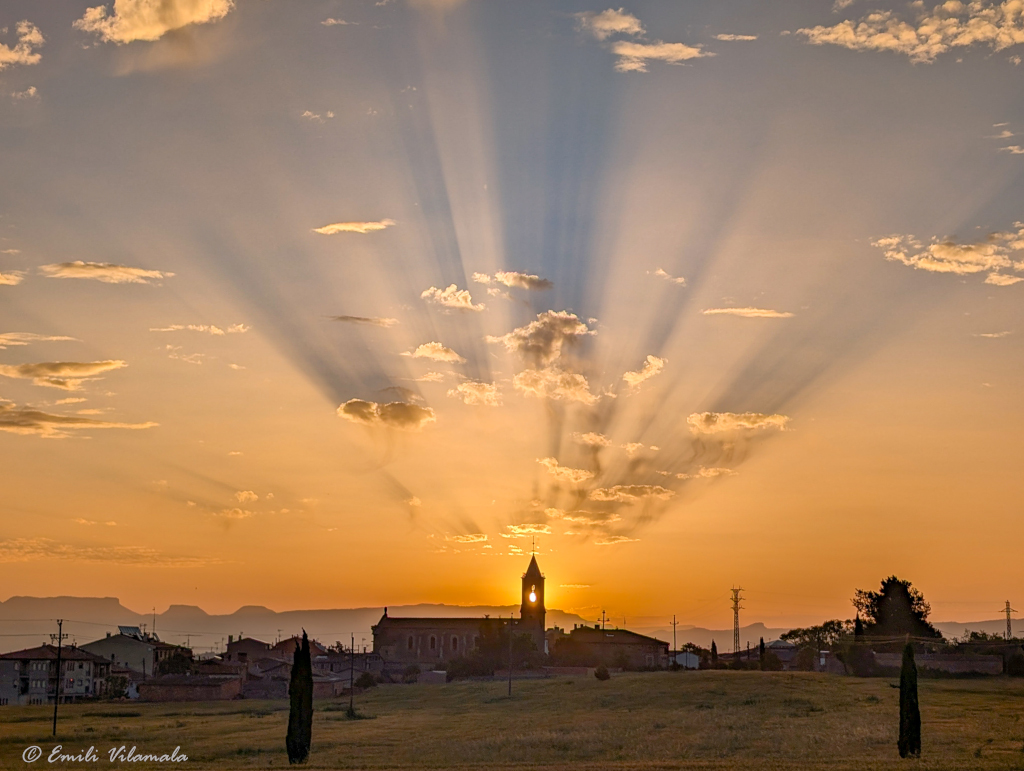日出天空中的陰影
Sunrise Shadows in the Sky

來源:Emili Vilamala|發表日期:2024-09-21
世界協調時 9 月 22 日 12 時 44 分是今年 9 月春分的決定性天文時刻,屆時太陽將穿過天體赤道向南移動,開始一年一度在地球天空中的旅行。這標誌著我們這顆美麗星球的北半球進入秋季,南半球進入春季,全球晝夜幾乎相等。 當然,如果您透過觀看日出來慶祝天文上的季節更替,您還可以尋找嵴椎射線。在日出(或日落)的黃昏時分,由雲層投下的陰影勾勒出的折射光線會在暮色的天空中呈現出戲劇性的效果。由於視角的原因,平行的雲影似乎會指向初升的太陽,以及春分日地平線正東的位置。但在這張六月初拍攝的壯觀日出天景照片中,平行的雲影和夕陽的餘暉似乎都匯聚到了東邊地平線上更靠北的日出位置。 這張精心構圖的照片將冉冉升起的太陽置於西班牙加泰羅尼亞巴塞羅那省維克鎮一座教堂鐘樓的正後方。
原文:The defining astronomical moment of this September's equinox is at 12:44 UTC on September 22, when the Sun crosses the celestial equator moving south in its yearly journey through planet Earth's sky. That marks the beginning of fall for our fair planet in the northern hemisphere and spring in the southern hemisphere, when day and night are nearly equal around the globe. Of course, if you celebrate the astronomical change of seasons by watching a sunrise you can also look for crepuscular rays. Outlined by shadows cast by clouds, crepuscular rays can have a dramatic appearance in the twilight sky during any sunrise (or sunset). Due to perspective, the parallel cloud shadows will seem to point back to the rising Sun and a place due east on your horizon on the equinox date. But in this spectacular sunrise skyscape captured in early June, the parallel shadows and crepuscular rays appear to converge toward an eastern horizon's more northerly sunrise. The well-composed photo places the rising Sun just behind the bell tower of a church in the town of Vic, province of Barcelona, Catalonia, Spain.
※ 本文由萌芽機器人自動轉貼自每日一天文圖(Astronomy Picture of the Day,APOD),原文為英文,正體中文是透過 DeepL 翻譯及 OpenCC 進行自動處理,內容僅供參考,若有任何錯誤之處還請見諒!
關於每日一天文圖:每日一天文圖網站是美國國家航空暨太空總署與密西根理工大學提供的服務,網站每天提供一張影像或圖片,並由天文學家撰寫扼要說明其特別之處。